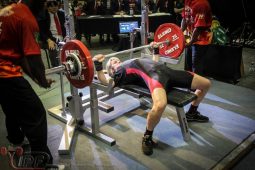Pull ups can be difficult for some people, especially females, heavy people and those who might not workout very often. There is a simple trick you can use though to give yourself more of an advantage to be able to do pull ups easier and more effectively. Simply angling your body differently can make a world of difference. In the video below Max Shank explains this technique that should make it easier for you to do your first chin up and many more.
Improving your pull-up game is a challenge many people face. Here’s a detailed guide to make pull-ups a bit easier for you.
- Lat Pulldowns: Start by working on lat pulldown machines at the gym. They simulate the pull-up motion and work the same muscles. This way you can start building strength without having to lift your entire body weight. Aim for 3-4 sets of 8-12 reps, gradually increasing the weight.
- Assisted Pull-ups: Most gyms have an assisted pull-up machine. This machine counterbalances your body weight, making the pull-up easier. As you get stronger, you can reduce the counterweight. Again, aim for 3-4 sets of 8-12 reps.
- Negative Pull-ups: Jump or step up so your chin is already above the bar, then lower yourself down as slowly as you can. This eccentric movement builds strength quicker than you’d think. Do around 3 sets of as many reps as you can handle.
- Band Assistance: Loop a resistance band around the pull-up bar and place your foot or knee in the loop. The band will give you a boost as you perform pull-ups. Start with a thicker band and work your way down to thinner ones as you get stronger.
- Grip Training: Your ability to do pull-ups can be limited by grip strength. Incorporate exercises like farmer’s walks, dead hangs, or grip squeezers into your routine to improve your hold on the bar.
- Core Strength: Believe it or not, your core helps stabilize you during a pull-up. Incorporate planks, leg raises, and other core exercises to help you maintain good form during the pull-up.
- Technique Tweaks: Keep your elbows slightly in front of the bar rather than directly below it. Engage your shoulders and lats before pulling yourself up, rather than relying solely on your arms. These small adjustments can make a big difference in your ability to perform a pull-up.
- Progressive Overload: Keep a record of your pull-up performance, whether it’s number of reps or level of assistance. Strive to improve some aspect of your pull-up performance each week, even if it’s just by one additional rep.
- Rest and Recovery: Muscles grow during periods of rest. Make sure you’re getting enough sleep and nourishment for muscle recovery. Consider spacing out your pull-up training days to allow for this crucial recovery time.
- Consult a Professional: If you’re really struggling despite consistent effort, consider hiring a personal trainer, even for just a few sessions. They can provide personalized guidance and identify any weaknesses or technique issues you might be overlooking.
By integrating these techniques into your training routine, you should see improvements in your pull-up ability. Remember, the key is consistency and gradual progression. Good luck!










